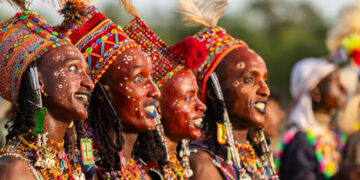6. Cannibalism

Despite the fact that the idea of tucking into your deceased granny would make most of our stomachs turn, endocannibalism (ritual consuming of one’s own dead) is practiced in one form or another in many places throughout the world.
Whilst there are a few definitely confirmed cases, anthropologists tend to err on the side of caution with their estimates for how many cultures practice cannibalism, as it’s thought that a lot of reports of the tradition comes from colonial misunderstanding of local cultures (read: white people rolling up and getting everything wrong).
The Aghori of Varanasi in India are famous for their cannibalistic rituals. This sect of Hinduism strives to surround themselves with death, worshipping Shiva the Destroyer, and this includes removing one’s fear of it. They consume the flesh of the dead in the pursuit of immortality and enlightenment.
The Amazonian Yanomami tribe believe that the eating of a corpse will allow the soul to pass on to paradise. They will initially leave the body out for the bugs to consume, then once only the bones remain, they will grind them up and cook them into a fermented banana soup that is consumed by the tribespeople.
Dining on humans isn’t without its dangers, though. There is a degenerative neurological disease called Kuru that is passed on through cannibalism and it struck the Fore people of Papua New Guinea particularly badly. At its height, it was up to 9 times more common in women and children than in men, as the men would eat the choice cuts of meat, leaving the offal (including the brain) to the women and children.
So the lesson here is that if you’re going to snack on your dead loved ones, stick with the steaks.





































Discussion about this post